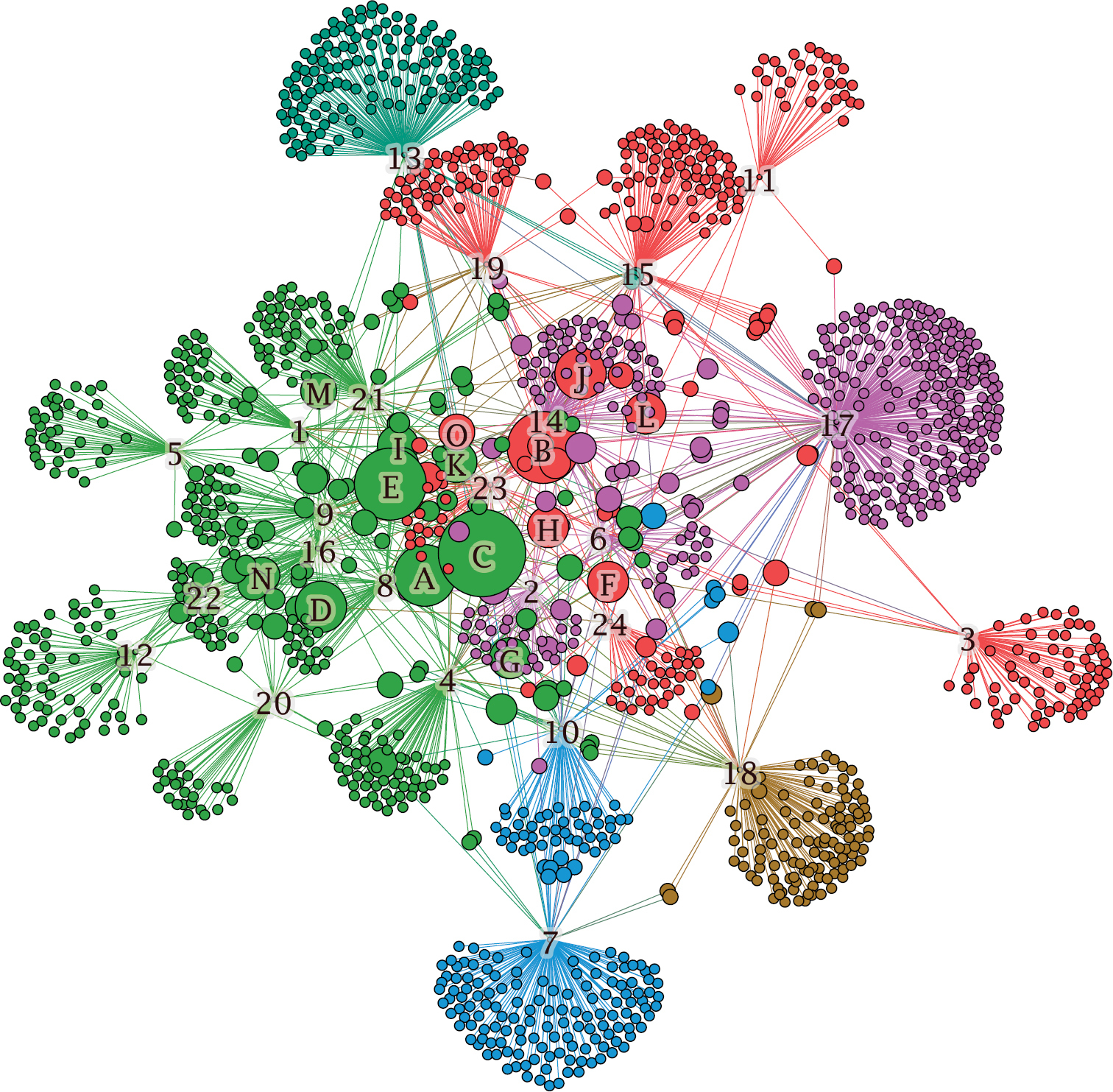
|
||
|
A citation network of papers within this special issue. Each node represents an article, with the node radius proportional to the number of citations. Citations between papers within the special issue have been excluded, and this editorial was not included at all. Numbered nodes are papers in the special issue (Appendix 1) and lettered nodes are the 15 articles that were cited six or more times in the network. The colours represent different modularity classes of the network (the light green one appears to be related to impact assessments). Of the 1520 papers cited 87.2% were only cited by one paper in special issue, and less than 1% were cited by four papers. This network can thus be seen as indicative of a wide-ranging field linked by a few key frameworks, though the nature of the special issue and the authors involved means there are some significant biases and self-selections occurring (which, we expected, would have biased the network towards being more connected than it would otherwise be). The network was built in Gephi (0.9.2). A Bacher et al. (2018), Socio-economic impact classification of alien taxa (SEICAT); https://doi.org/10.1111/2041-210X.12844 B Blackburn et al. (2011); A proposed unified framework for biological invasions; https://doi.org/10.1016/j.tree.2011.03.023 C Blackburn et al. (2014); A Unified Classification of Alien Species Based on the Magnitude of their Environmental Impacts; https://doi.org/10.1371/journal.pbio.1001850 D Evans et al. (2016); Application of the Environmental Impact Classification for Alien Taxa (EICAT) to a global assessment of alien bird impacts; https://doi.org/10.1111/ddi.12464 ental Impact Classification for Alien Taxa (EICAT); https://doi.org/10.1111/ddi.12379 F Hulme et al. (2008); Grasping at the routes of biological invasions: a framework for integrating pathways into policy; https://doi.org/10.1111/j.1365-2664.2007.01442.x G Latombe et al. (2017); A vision for global monitoring of biological invasions; https://doi.org/10.1016/j.biocon.2016.06.013 H McGeoch et al. (2016); Prioritizing species, pathways, and sites to achieve conservation targets for biological invasion; https://doi.org/10.1007/s10530-015-1013-1 I Nentwig et al. (2016); The generic impact scoring system (GISS): a standardized tool to quantify the impacts of alien species; https://doi.org/10.1007/s10661-016-5321-4 J Richardson et al. (2000); Naturalization and invasion of alien plants: concepts and definitions; https://doi.org/10.1046/j.1472-4642.2000.00083.x K Seebens et al. (2017); No saturation in the accumulation of alien species worldwide; https://doi.org/10.1038/ncomms14435 L Wilson et al. (2009); Something in the way you move: dispersal pathways affect invasion success; https://doi.org/10.1016/j.tree.2008.10.007 M Pyšek et al. (2008); Geographical and taxonomic biases in invasion ecology; https://doi.org/10.1016/j.tree.2008.02.002 N Kesner and Kumschick (2018); Gastropods alien to South Africa cause severe environmental harm in their global alien ranges across habitats; https://doi.org/10.1002/ece3.4385 O Harrower et al. (2017); Guidance for interpretation of CBD categories on introduction pathways. |